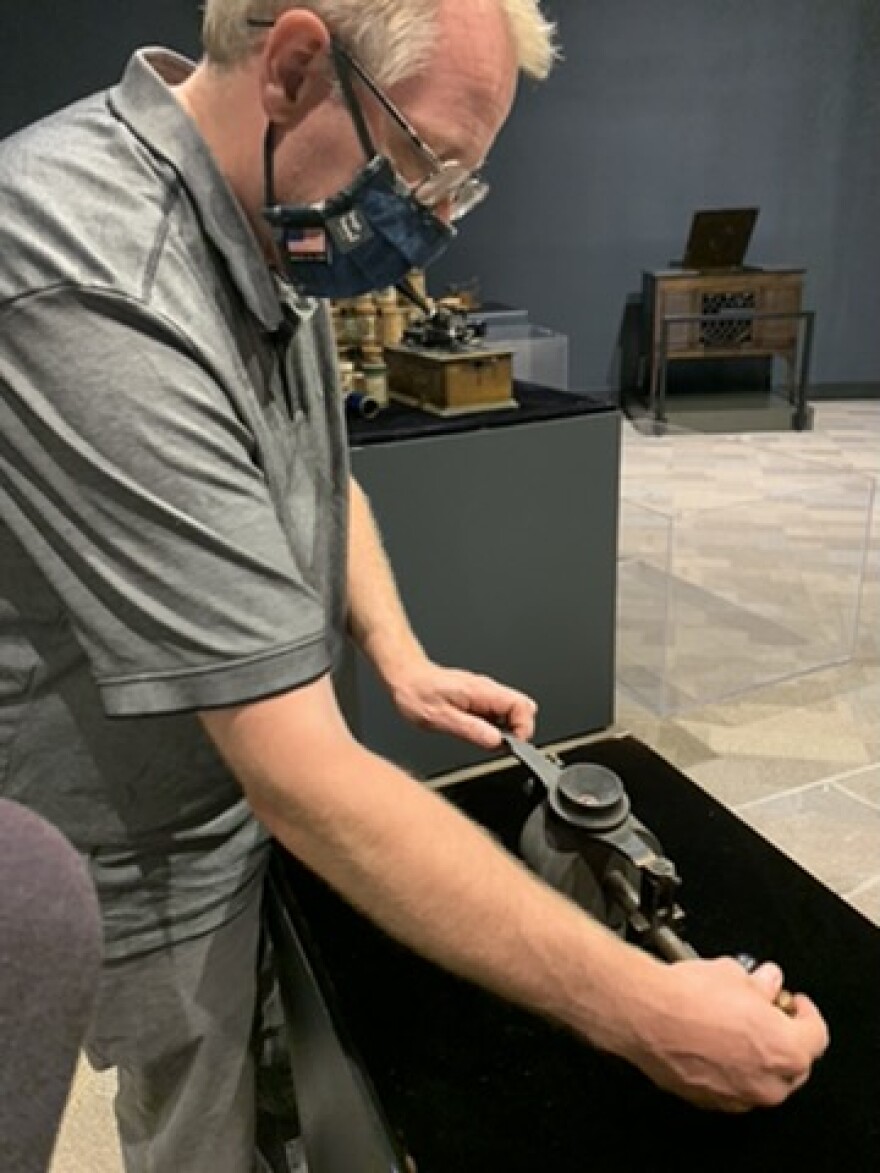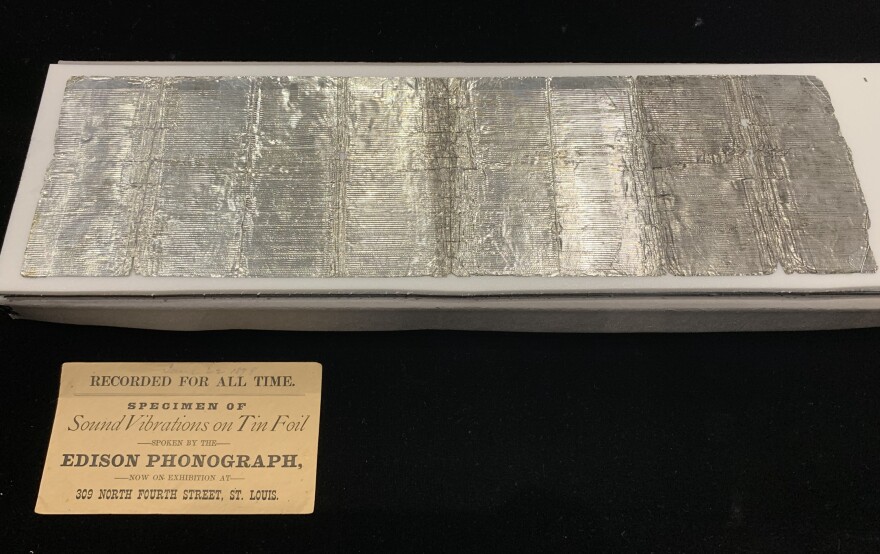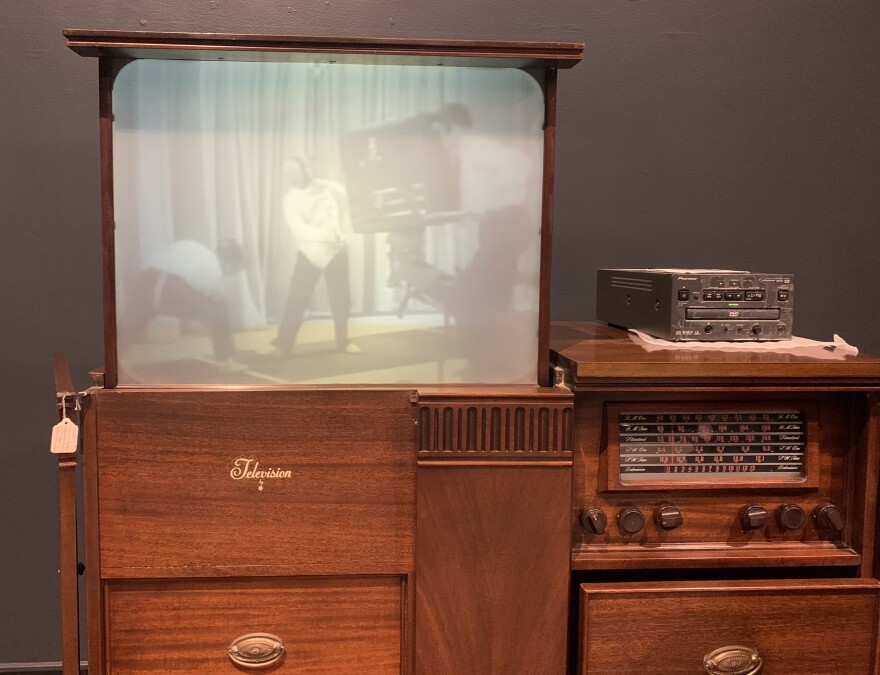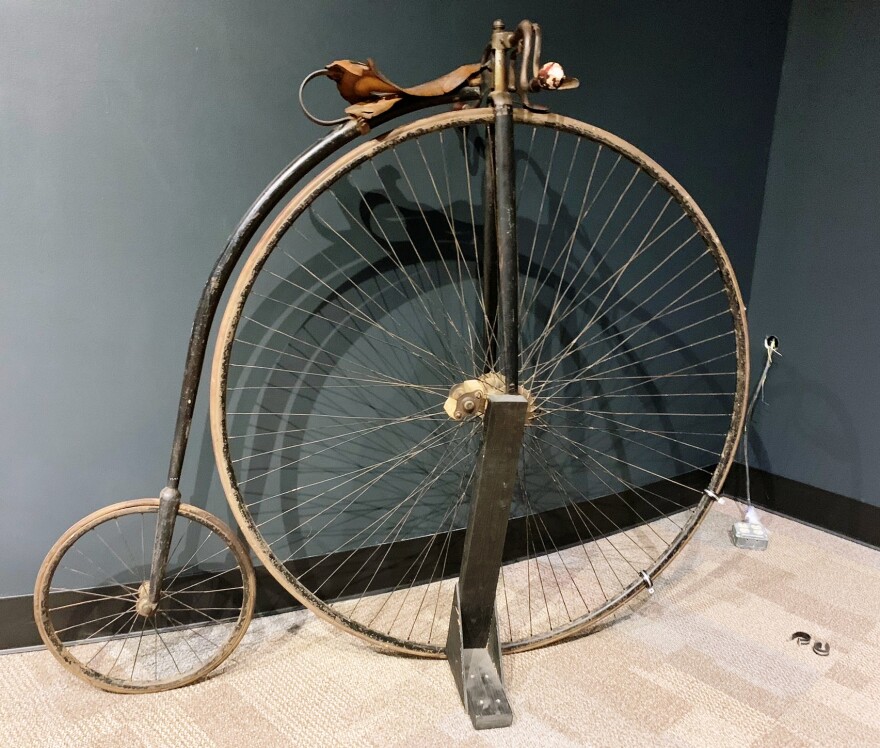Schenectady’s Museum of Innovation and Science plans to reopen with two new exhibits next week — exhibits that help explain the existence of this very story.
While the museum’s playspace area and planetarium are closed to the public, the place sounds alive and well. Chris Hunter, vice president of collections and exhibitions at MiSci, is testing a rare Berliner gramophone from the 1890s, part of two new features on the history of sound recording and play in the Capital Region. He and spokesperson Bradley LaMere admit the reopening process hasn’t been easy — like many science museums across the country, MiSci had to scrap the majority of its more popular, interactive pieces in favor of touch-free learning.

“Our original summer exhibit, ‘Design Zone,’ was actually one of the most interactive exhibits you can ever find," Hunter says. "Like, everything in the exhibit was hands-on.”
“So in the interim what we’re doing is we’re using our existing collection," LaMere adds. "And these are some real gems that Chris has pulled out of our collections and archives."
Hunter nods. “Right, these are some of the stars of the collection."
Included in the “stars” is a 1974 soap box derby car, a penny-farthing bicycle (the first vehicle to travel over Schenectady’s Western Gateway Bridge), and the oldest surviving sound recording in the U.S., made by Thomas Edison with his phonograph in 1878. Edison moved his Edison Machine Works, which would ultimately become General Electric, to Schenectady in 1887. This particular recording was etched onto tinfoil in St. Louis, with an early phonograph that kind of resembles a modern-day woodshop vise, topped with a small dish on a rotating cylinder.
“You would yell into this — this diaphragm, here," he demonstrates. "And as you’d crank this and kinda hold this down, that would make the grooves."

It’s a little hard to make out, but Hunter says the one-minute recording includes a cornet piece as well as renditions of “Mary Had a Little Lamb” and “Old Mother Hubbard” by Thomas Mason, a political humorist and friend of Edison’s who went by the pen name “I.X. Peck” in St. Louis.
Hunter says MiSci scanned and digitzed the recording a few years ago, and in order to keep things touch-free, visitors will be able to hear that file and others by scanning nearby QR codes with their phones. LaMere says admission to the exhibits is free, although visitors are asked to wear masks and “pre-order” their tickets online for one of two daily sessions to limit crowds.
"We have additional hand sanitation [sites]," he adds. "We're asking all patrons to, within 24 hours prior to visiting, to take their temperature. If it's above 100.4 degrees we ask that they don't come to the museum."
LaMere adds the new exhibits are designed for one-way traffic, weaving visitors through history.
Hunter says Edison didn’t seriously pursue sound recording until he heard his competitor, Alexander Graham Bell, was working on his own version of the phonograph, called a graphophone, in 1885.

Edison moved on from tinfoil in favor of wax cylinders — but neither Bell nor Edison forsaw the popularity of the flat record by German inventor Emile Berliner, which quickly became the standard. The problem, Hunter says, was that all three methods could only hold anywhere from 2 to 4 minutes of sound.
“You know, radio programs were an hour long. People don’t do short speeches," Hunter explains. "So a GE researcher named Clarence Hewlett developed this rather odd machine called the film phonograph. And it was able to record 90 minutes of audio onto 10 minutes of film. It was just film that was all soundtracks.”
Hunter estimates the museum has about 20 hours of recorded radio programs using the film phonograph. In a sign of the times, the device was actually made almost immediately obsolete by RCA’s invention of the long-playing record in the 1930s. But Hunter says the oldest surviving radio drama took place right at WGY in Schenectady.
"It was an adaptation of A Midsummer Night's Dream," says Hunter. "It was actually directed by Izetta Jewel Miller, who was a top Broadway and Washington D.C. theatre performer and a women's suffragist. She had married, I believe, a geology professor down in Washington D.C. who had gotten a job at Union College. So she moved up here to Schenectady and instantly fell in with WGY."

Hunter says GE’s branch in Syracuse was behind one of the first magnetic recorders following World War II — a colorful “play-talk” machine designed for children as a toy. The museum’s play exhibit goes on to explore the many ways toys prepared children for adulthood, whether it be through exercise or role-play. Hunter says the two exhibits build off one another, as sound recording and broadcasting opened the door to new worlds of play.
"It was with the inception of radio and pop culture in the 1920s that fantasy really came into play, and you began to see science fiction, and [kids] played with historical items," he adds.
Hunter says commercial, broadcast radio is coming up on its centennial this year. “Sound Recording” and “Play!” open with MiSci on July 16. The museum is starting off with a limited schedule, Thursday through Sunday from 10 a.m. to 4 p.m.



